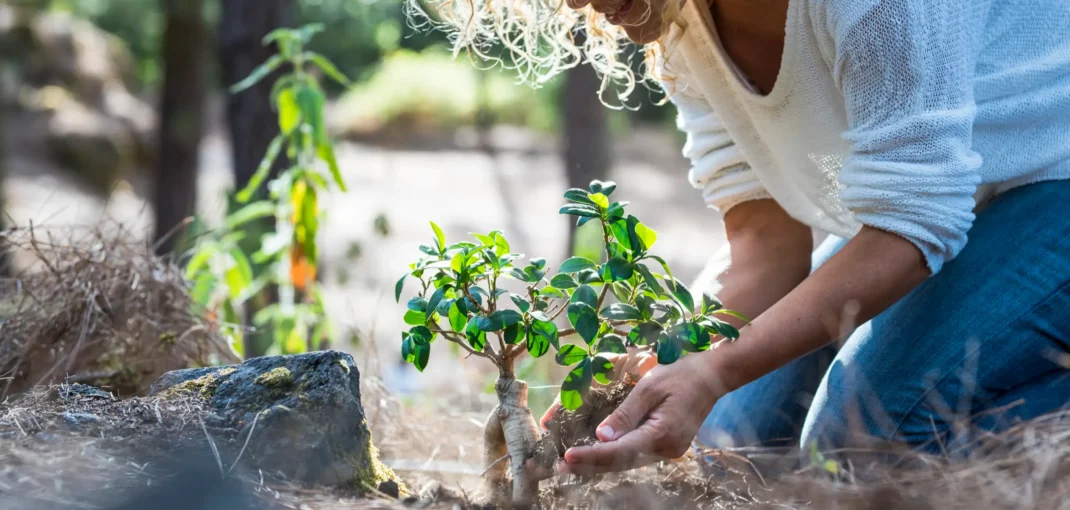What is Earth Day? Since 1970, anybody with even a passing interest in preserving and restoring the planet’s natural resources and protecting all of its living beings and their environments has at least heard of this important day of awareness.
Today, Earth Day–which occurs annually on April 22–is seen as both a celebration of the steps environmentalism has taken over the past half-century, as well as a reminder that there is still so much work to be done. Finally and most importantly, Earth Day is a call to action, because positive environmental change requires acts of caring for our planet on a large scale.
Why Do We Celebrate Earth Day?
Reducing or eliminating the impacts of large polluters and fossil fuel companies remain the top priority for supporting the health of our planet, but the inception of Earth Day in the United States sparked a level of individual responsibility that, on a widespread level, can make a significant difference. The power of action is at the heart of Earth Day’s purpose: to make change by doing, not by simply settling for promises without a plan. To that end, everybody can be involved in protecting our planet by making an Earth Day pledge. What will yours be?
If you’re having trouble thinking of ideas to help you be a part of the solution, you’ve come to the right place. We’ll give you some Earth Day facts–including a quick background on how Earth Day came to exist as we know it today—Earth Day activities you can do to celebrate and spread the word on April 22, and, finally, five Earth Day pledges you can commit to over the course of the next year. Before you know it, you’ll be practicing more sustainable habits, setting a good example for your friends and family, and honoring the spirit of Earth Day by taking action.
5 Things You Can Do For Your Earth Day Pledge
Come April 22, you may still be looking for environmental resolutions you can carry through to next year. What should you commit to for Earth Day, and how can you make sure you keep those commitments all year long? We’ve got some ideas.
1. Plant A Tree
Almost everyone knows the impact of trees in our ecosystem: They provide habitats for tons of animal life, and they pump oxygen into our atmosphere. Not many people are familiar with trees’ most important superpower in the climate change fight, though–trees help to store carbon. Within the tree itself or into the soil they grow out of, trees help to pull carbon dioxide from the air as they grow. Carbon in the air is what contributes to global warming; in the soil, it does not have this effect. This is part of why deforestation is such a critical problem. Restoring plant life helps pull excess carbon out of the air and store it in Earth’s surfaces. So, you want to do something that feels like a big Earth Day activity and that will have an effect? Plant a tree.
2. Skip The Pump And Pedal Instead
One of the most impactful habits you can change on a daily basis is the amount of fossil fuel you burn, and for most Americans, that is found in the gas tanks of our vehicles. Simply put, whenever it’s possible, you ought to walk or ride your bicycle instead of driving.
If the cost of a gallon of gas isn’t enough motivation to swap out the carpool lane for the bike lane, consider the environmental impact. On average, every 3 miles you don’t drive keeps 2.6 pounds of carbon dioxide out of the air. A 15-minute commute on two wheels instead of four could mean that you are saving 25-30 pounds of CO2 a week! And, if your drive to work doesn’t involve long stretches of freeway driving, it’s quite likely that a bike ride would not take you much longer–in fact, with traffic congestion, it might even be faster. To top it all off, cycling is good for your cardiovascular health. It won’t always be feasible for everyone to give up their automobile in favor of a bike, but if it’s a possibility, it can be one of the most rewarding daily lifestyle changes you can make that also makes a real difference for the environment.
3. BYOB (Bring Your Own Bags)
One of the most important mindsets you can bring to your Earth Day pledge is to instill a habit that removes single-use objects from your life. Look around you right now–there is a decent chance that you might spot some wrappers, containers, packaging, or other single-use plastics that will never serve another purpose on Earth again, other than to pollute the environment. This is especially true of plastic grocery bags, which are particularly harmful because of their tendency to catch the wind and fly their way into animal habitats, including waterways, where they can easily suffocate, trap, injure, and kill wildlife. The best habits you can fix are the ones you do frequently, and food shopping probably qualifies–you should definitely invest in reusable grocery bags.
ChicoBag is a fantastic option to stock up, and they’re making all the right moves in terms of climate justice. They are a certified B Corp and Climate Neutral certified, with 1 percent of their annual sales directly supporting environmental charities and, like us, they’re committed to eliminating single-use items. They’ve got all kinds of reusable goods, ranging from utensil sets to bottle slings, that can help you be more sustainability-oriented. But as their name implies, their claim to fame is their bags, which are durable, lightweight, collapsible, and machine washable. The original ChicoBag tote can carry up to 25 pounds and, over its lifespan, replaces more than 1,000 single-use bags. Now that is the kind of repeatable Earth Day impact you could easily do.
Of course, your checkout bags aren’t the only plastic you need to replace. Produce purchasers can easily use 10-15 plastic bags in a single trip to the grocery store. Reusable vegetable bags are a much better alternative (especially ones made out of natural materials). And, in the event you forget your grocery totes at home, always opt for paper at checkout–their large size makes them great for reuse, whether you use them for multiple trips to the store or just keep them handy at home, where they work well as a smaller recyclable waste container for cans and bottles.
4. Organize A Clean-Up Day
No matter where you live–be it near the forest or the beach, the river or the mountains–you probably have a nearby recreational area that you’re particularly fond of. If it’s an especially popular spot, there’s also a decent chance that litter has made its way to your favorite natural hangout. A great Earth Day pledge is to offer a helping hand in cleaning up–and then to see how many friends you can get to volunteer their time, too.
Social media is a great tool for organizing clean-up days, because you can quickly spread the word among your networks and encourage them to do the same. Set a date, time and place, and identify the help and tools you think you’ll need. If you’re not providing equipment like waste bins and gloves, let your volunteers know to bring some of theirs. Try to think about the roles people might want to fill in your clean-up; maybe you could use someone with some hauling capacity, or maybe someone wants to offer to make a run to the recycler. You probably won’t get a majority of the people who see your event to participate, but if only a fraction of them show up, you can still make a dent that matters. And then, after you’re done, you can celebrate your efforts in the beautiful area you just helped clean up.
5. Shift To Eco-Friendly, Sustainable Clothing
It wasn’t long ago that “stylish, high-quality clothing” and “eco-friendly clothing” were mutually exclusive–you’re probably conjuring up images of scratchy hemp ponchos or bamboo rope-soled shoes. Times have changed. While those still have a place in some wardrobes (hemp is still a pretty amazing fiber for clothing), technology has made great strides in turning recycled materials into comfortable, great-looking garments–to the point that it’s entirely possible to convert an entire wardrobe into a closet full of sustainable styles.
While the most eco-friendly decision you can make with your clothing is to buy thrifted clothes, you can still make an Earth Day pledge to dress more sustainably by identifying brands that commit to using recycled materials. There are even some companies that are turning recycled plastics into more heavy-duty clothing items, like outerwear and shoes. Turning a single-use plastic bottle into a pair of sneakers is definitely a worthy Earth Day endeavor.
How To Celebrate Earth Day Every Day
The impact of Earth Day since its inception is obvious, yet at the same time, it’s also clear that a single day of action once a year is not enough to turn the tide on a global scale. Environmental care for the Earth requires a year-round effort. While some of the Earth Day celebrations and activities we’ll mention below are on the relatively “big” side, the key to looking after the planet and taking care of the environment on a daily basis is to develop small but repeatable habits that reduce your carbon footprint.
No matter what your Earth Day pledge ends up being, the important thing is that you take action. Big or small, your impact is part of a larger initiative to protect the environment. Whether you set up an affordable budget to donate to tree-planting organizations over the next year, or you want to put some elbow grease into a beach clean-up day, your contributions on Earth Day are a step toward preserving the only home we’ve got.






